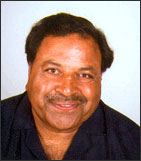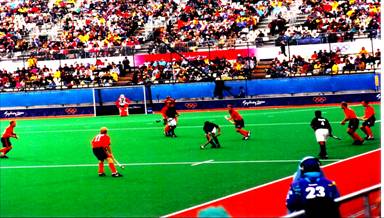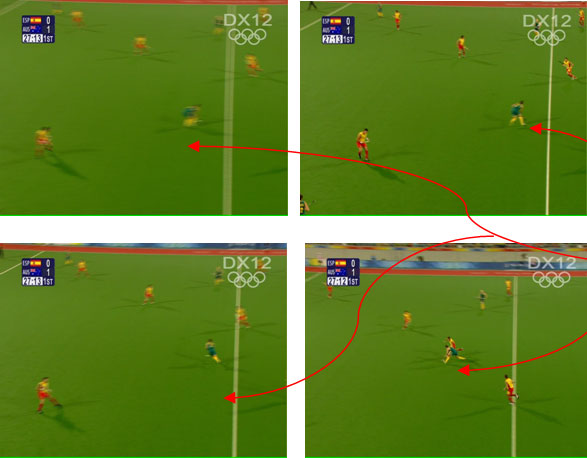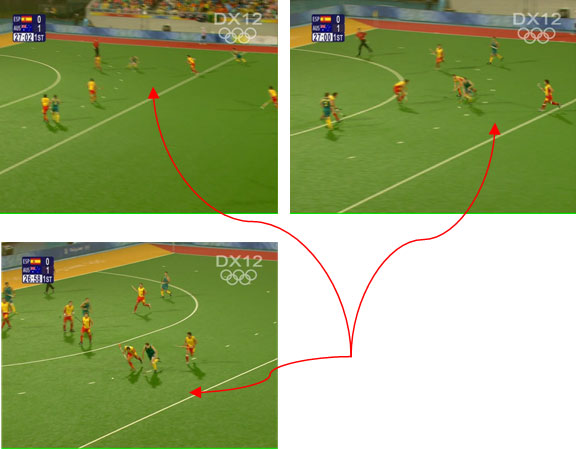How to NOT
Receive the Ball
As a Forward on the Run

For more coaching information, visit www.coachshiv.com
| January | February | March |
|
April | May | June |
|  |
|||||
| July | August | September | October | November | December | |
![]()
INTRODUCTION
I like to start this article with a quote from the Argentine national team football coach, Cesarl Luis Menotti, who coached Argentina to the 1978 Buenos Aires World Cup title:
"During practice, when I see my forward receiving the ball with his back towards the goal he is attacking, I stop the practice and tell the player - You are wasting your time and that of your fellow teammates. Receive the ball with a tilted body, preferably on the run."
This basically says it all. But sometimes it takes a while for our hockey players - especially forwards - and the coaches, to clearly understand the advantages and disadvantages of receiving the ball on the run while facing the attacking goal, versus receiving it with their back towards their attacking goal.
PARETO PRINCIPLE
The Pareto Principle, also known as the 80-20 rule, was postulated by the Italian economist Vilfredo Pareto. The principle states that 80% of one's success comes from 20% of specific efforts. With reference to the topic in discussion, if the forwards receive the ball on the run while facing the goal, they maximize their chance of scoring (80% success zone). On the other hand, if they receive the ball with theiir back to the attacking goal, they have to work much harder to get a goal (20% success zone).
Logically, forwards should be receiving the ball facing the goal, as this is the high yielding 80% success zone. Unfortunately, it is often times the other way around, with forwards receiving the ball with their back to the goal, resulting in the low-yielding 20% success zone. This has resulted in many golden attacking opportunities lost, without the forwards even being aware of them.
The truth is that we are slaves of our habits, whether they are good or bad. And we play the way we practice.
BASIC CONCEPT
Receiving the ball as a forward and on the run is a learned technique and a mastered art. The effective and dangerous forwards receive the pass in such a way that they are in an optimal offensive position the moment they receive the pass. This forces the defender into an awkward and vulnerable position, where he is jockeying back on his heels. And of course, at the mercy of the forward, who controls the contest.
There is a direct co-relation between the position of the passer, receiver and marker, and the specific zone of the field where all this action is happening. In order to achieve an advantageous situation, the forward has to be aware of:
Please allow me to elaborate on this concept with three frozen game situations below, taken from the 2000 Sydney and 2008 Beijing Olympic Games.
| 2000 Sydney Olympics (Pakistan) |
The Pakistani right-in is receiving the ball with his back towards the attacking goal. If and when he opens his left foot and curls anti-clockwise, he will notice that he has open primary space. Had he received the ball facing the goal, he could have created more attacking opportunities.

| 2008 Beijing Olympics (Australia) |
Mercurial forward Jamie Dwyer of Australia is playing left-in, and is receiving a pass from his left full-back. Jamie has his back towards the attacking goal, and has to curl 2-3 yards anti-clockwise, eventually falling into the trap of his opponents.
Had he received the ball with his reverse stick while facing the attacking goal, he would have much more open space, and would instantly be in an attacking position.
Note that Jamie is one of the forwards who usually receives the ball on the run, with the reverse stick or open stick, and takes on defenders instantly. This situation shows that sometimes even the best of the best forwards, such as Jamie Dwyer, may not be taking the most effective decisions during the run of play.

| 2008 Beijing Olympics (Australia) |
In the game situation below, the Australian right-winger is receiving a long-range pass from his left full-back, while cutting in. He is facing the attacking goal, sideways. In the process of receiving the ball, he keeps on cutting in, which results in his going on the strong side of the Spanish defender.
Instead, he could have easily opened his right foot and gone wide to his strong right side, hit the baseline, or just crossed the ball to his leading forwards if they happened to be in the right position
In fact that was exactly what he had done earlier, in the opening minutes of this semi-final match, which had resulted in Australia scoring their first goal.

CONCLUSION
I would strongly recommend coaches to encourage their forwards to receive the ball on the run, while facing the attacking goal. I do understand that there are game situations when one has to receive the ball with the back towards the attacking goal, especially when marked tightly and the pass is coming in a straight line. For example, the pass from a right full-back to the right-in, close to one's own 25-yard line.
Forwards are supposed to be offensive-minded and be willing to take calculated risks; receiving the ball with their back towards the attacking goal severely limits their offensive options. I leave you with a quote to ponder:
"A ship in port is safe, but that's not what ships are built for" - Rear Admiral Grace Murray Hopper
![]()